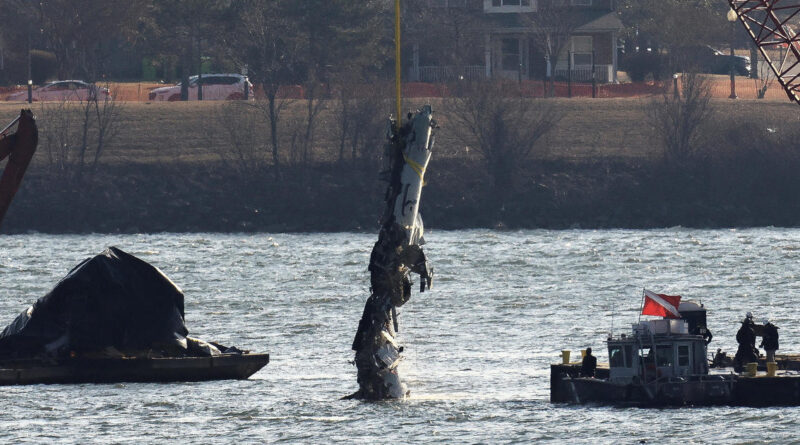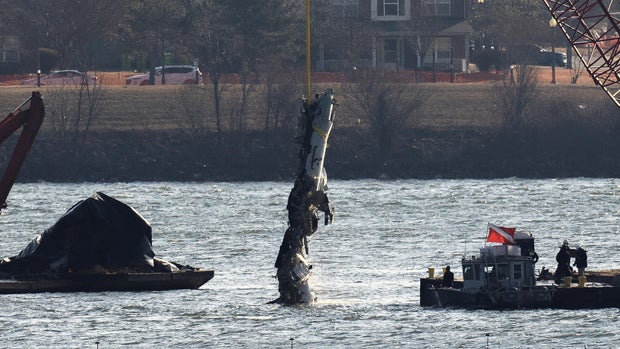More wreckage from D.C. plane crash recovered from Potomac River
More of the wreckage of an American Airlines regional plane was recovered Tuesday from last week’s deadly midair collision over Washington, D.C., that sent the airliner and an Army Black Hawk helicopter crashing into the Potomac River.
One of the pieces recovered Tuesday showed a portion of the American Eagle logo from the flight that took off from Wichita, Kansas, Wednesday for Washington’s Reagan National Airport with 60 passengers and four crew members on board.
Kayla Bartkowski/Getty Images
Crews began work Monday to salvage the wreckage, recovering the battered midsection of the plane’s fuselage, one of the engines and a wing.
“Over the next 24 hours, our goal is really to complete our commitment to finishing the civilian plane recovery,” Col. Frank Pera of the U.S. Army Corps of Engineers told reporters Monday.
Reuters/Eduardo Munoz
Officials said it will take several days to remove all of the wreckage, including the cockpit.
The D.C. fire department said additional remains were recovered Monday from the deadliest U.S. air crash in more than two decades and are in the process of being identified. Of the 67 victims from the collision, remains from 55 have been identified.
Newly released drone video from the National Transportation Safety Board shows a first look at the scene hours after the crash, the Black Hawk helicopter appearing mostly intact.
Investigators said they’re still poring over the flight data and cockpit voice recorders from both aircraft. They’ve also obtained training and flight logs for both flight crews, maintenance logs for both aircraft and are building the crews’ daily histories.
Interviews with all five air traffic controllers working the night of the collision have also been completed as the NTSB tries to piece together what happened.
Amid questions over whether military helicopters should be sharing the same airspace with commercial air traffic, Billy Nolen, a former acting administrator of the Federal Aviation Administration, said they should.
“It happens all the time,” Nolen said. “So this is not one of a zero-sum game. We are in this national capital region. What we should look at is, say, have we missed anything in terms of how this is designed, how the routes are designed, and is there anything that we would, should or could do differently to prevent this from happening again?”
As investigators push for answers, a moment of silence was held Monday at skating rinks across the country remembering the 67 lives lost, including those in the ice skating community.
Aaron Flaum/Hartford Courant/Tribune News Service via Getty Images




